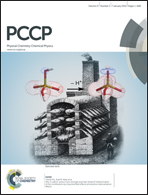Plasma-induced grafting of polyacrylamide on graphene oxide nanosheets for simultaneous removal of radionuclides†
Abstract
Polyacrylamide (PAM) grafted graphene oxide (denoted as PAM/GO) was synthesized by the plasma-induced polymerization technique and applied as an adsorbent for the simultaneous removal of radionuclides from radioactive wastewater. The interactions of PAM/GO with the radionuclides U(VI), Eu(III) and Co(II) were studied, along with their sorption kinetics. The results indicated that radionuclide sorption on PAM/GO was affected by the solution pH and ionic strength. The maximum sorption capacities of U(VI), Eu(III) and Co(II) on PAM/GO (0.698, 1.245 and 1.621 mmol g−1, respectively) at pH = 5.0 ± 0.1 and T = 295 K were much higher than those of radionuclides on GO and other adsorbents. The thermodynamic data (ΔH0, ΔS0 and ΔG0) calculated from the temperature-dependent sorption isotherms suggested that the sorption of radionuclides on PAM/GO was a spontaneous and endothermic process. These results indicate that PAM/GO is a promising material for the control of radionuclide pollution.


 Please wait while we load your content...
Please wait while we load your content...